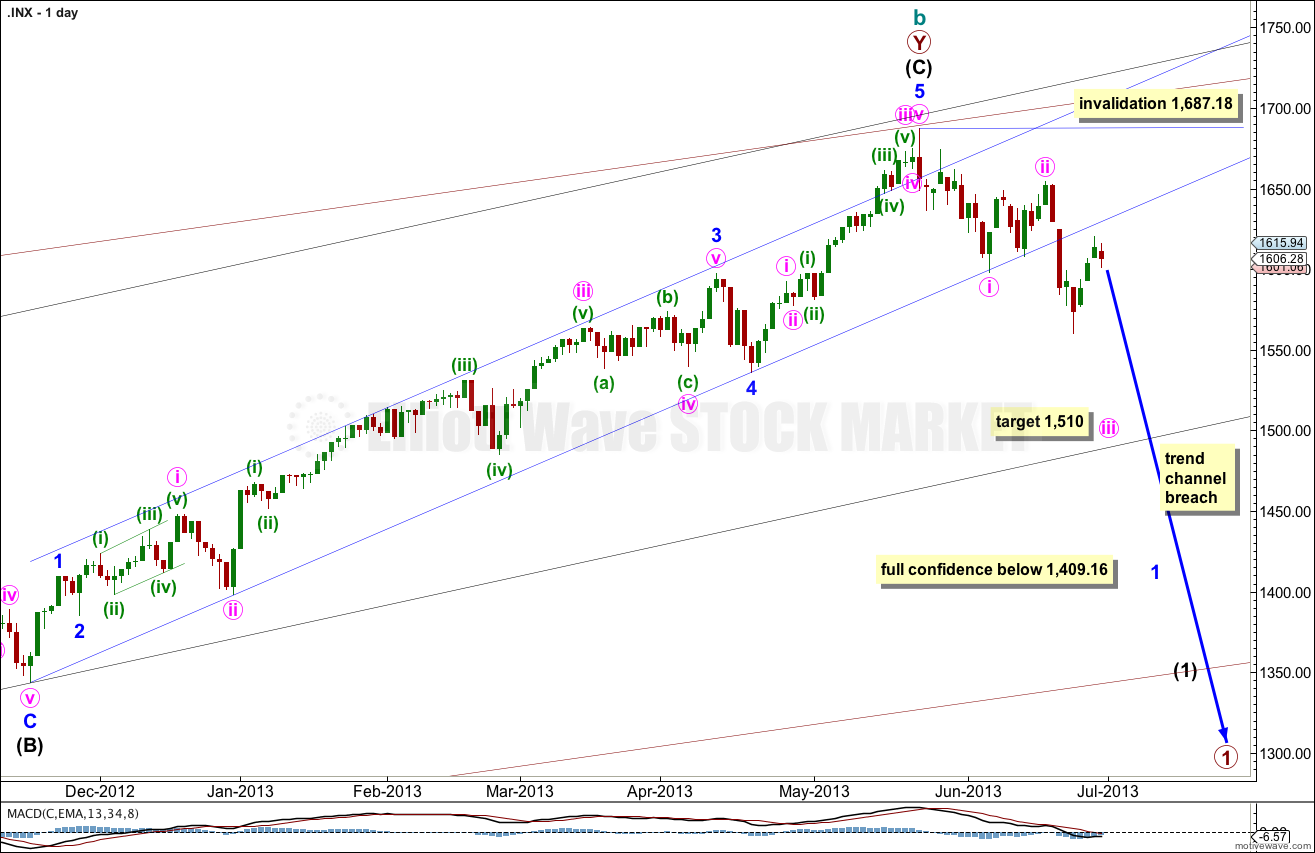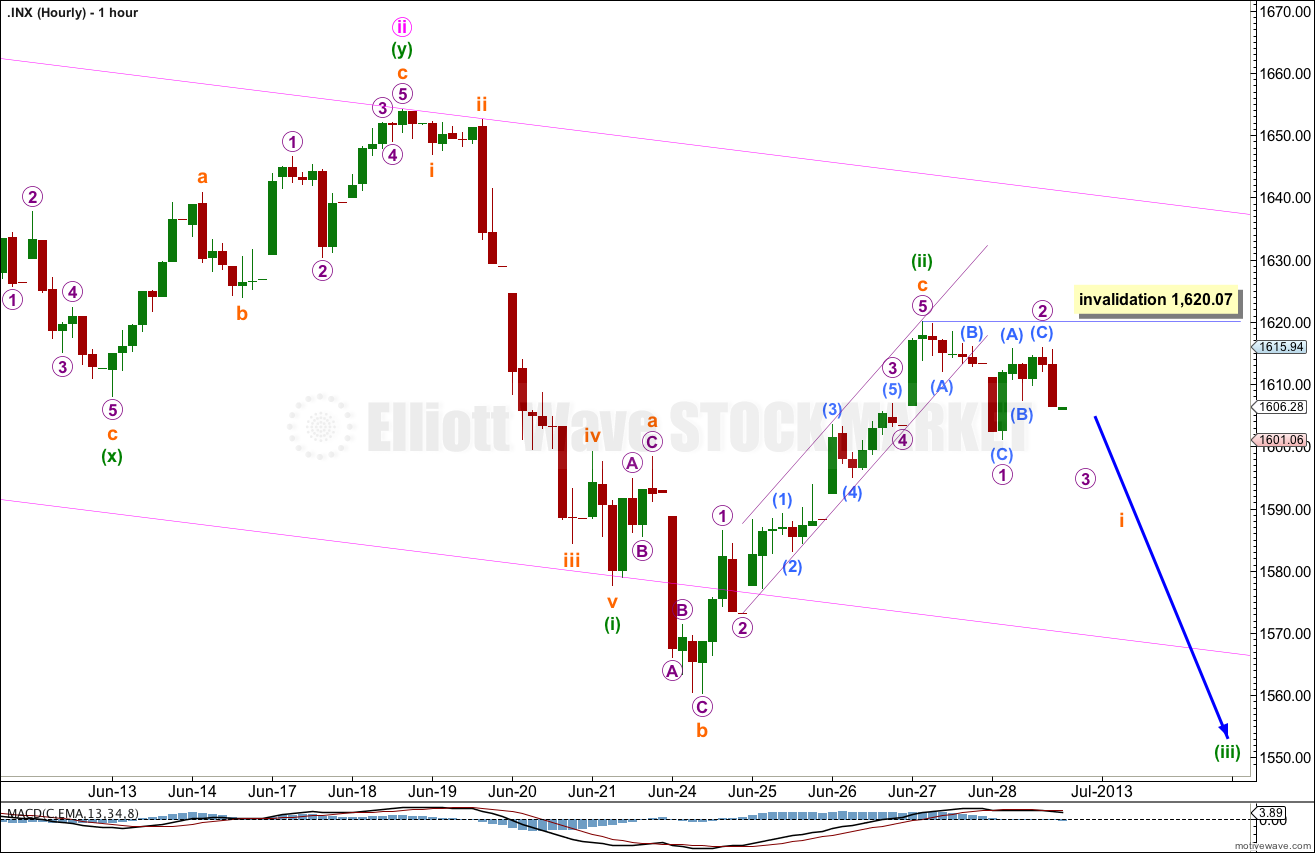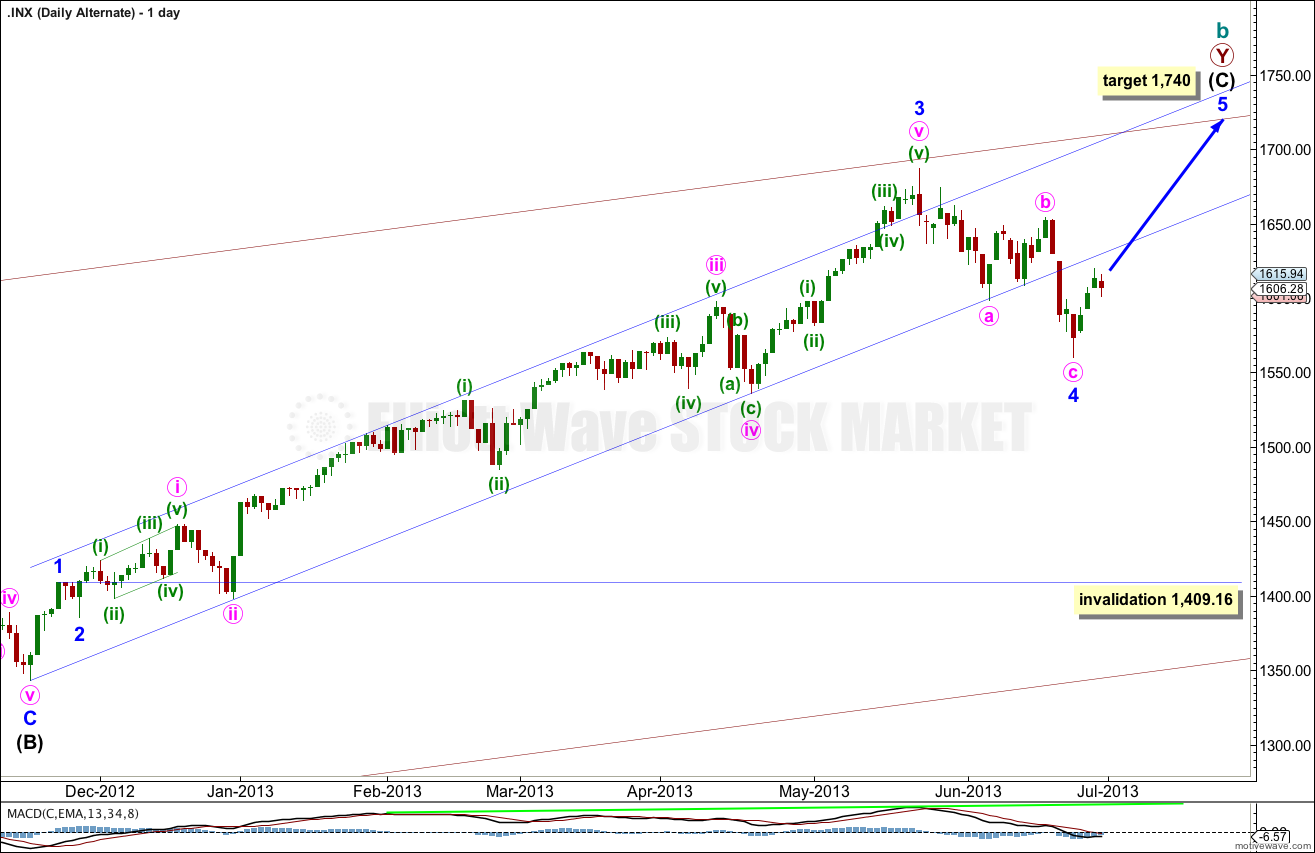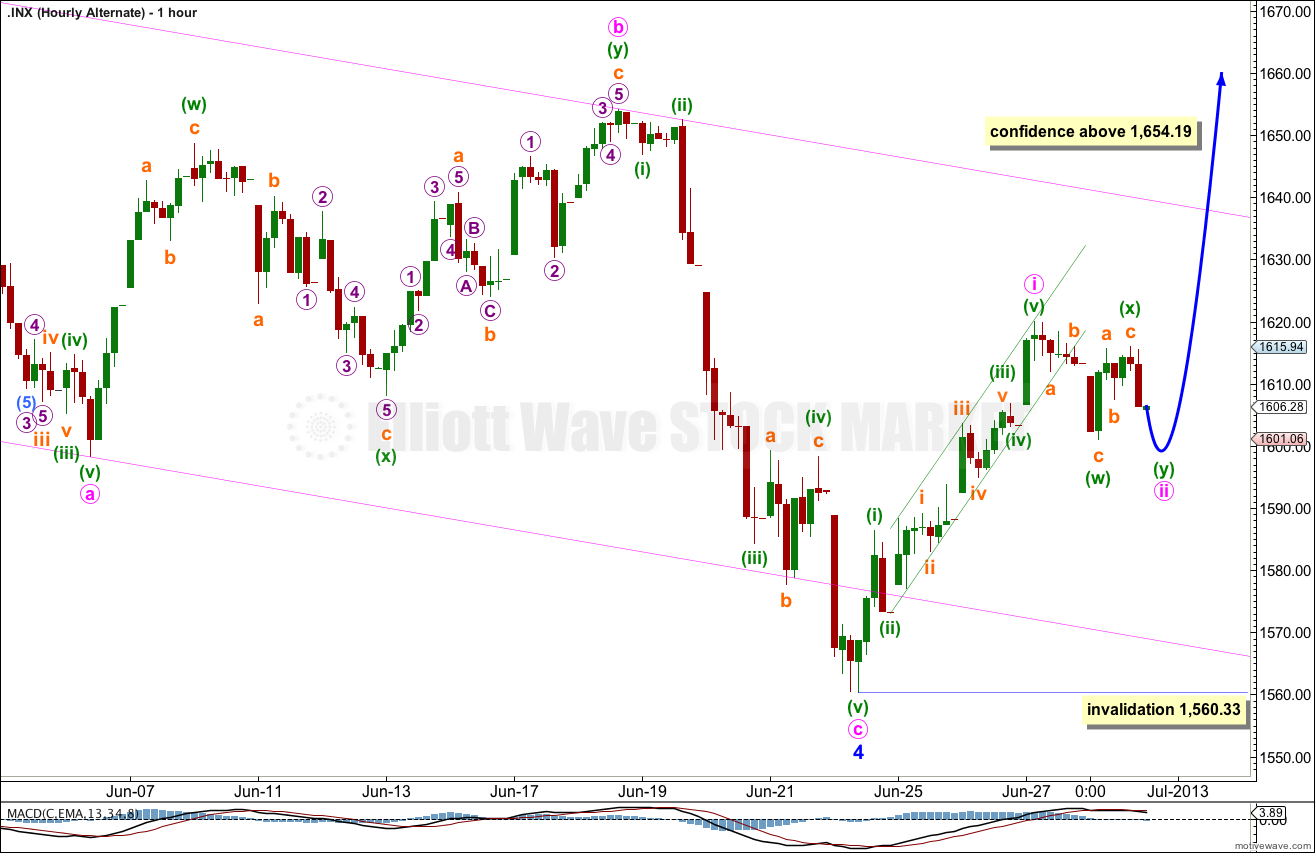Last analysis expected at least some upwards movement before price turned lower, for both wave counts. This is not what happened as price moved slowly lower during Friday’s session.
Both wave counts remain the same at the daily chart level. The main wave count has only a slightly higher probability than the alternate and we have no confirmation of a trend change.
Click on the charts below to enlarge.
Main Wave Count.
The widest maroon channel is copied over from the monthly chart and contains all of cycle wave b. It may be that price found final resistance at the upper edge of this channel.
The black channel in the middle is drawn about the zigzag of primary wave Y. Draw the first trend line from the start of primary wave Y to the end of intermediate wave (B). Place a parallel copy upon the extreme within intermediate wave (A). The upper edge of this channel also may be where price found resistance and where intermediate wave (C) ended.
The smallest blue channel is the most conservative best fit I can see for intermediate wave (C). It is very clearly breached by downwards movement.
I have looked back to September 2000 on the daily chart at smaller narrow channels about intermediate degree movements. Most of the time a breach like this indicates a trend change, but not always. What would give me more confidence in this trend change is a clear breach of the black intermediate degree channel. When that is breached I will calculate downwards targets for you.
There is no classic technical divergence between price and MACD on the daily or weekly charts. This is possible, but unusual for the S&P 500. This must reduce the probability of this wave count. We must still seriously consider the alternate.
There are no Fibonacci ratios between minor waves 1, 3 and 5 within intermediate wave (C). There is no Fibonacci ratio between intermediate waves (A) and (C). This lack of Fibonacci ratios slightly reduces the probability of this main wave count.
Minor wave 2 may not move beyond the start of minor wave 1. This wave count is invalidated with movement above 1,687.18.
Downwards movement for Friday’s session clearly breaches a parallel channel containing subminuette wave c upwards. Minuette wave (ii) is most likely over and the next wave has begun.
Friday’s movement subdivides into zigzags. If this is the start of minuette wave (iii) it must be a leading diagonal for subminuette wave i.
Within the diagonal micro wave 3 must make a new low below the end of micro wave 1 below 1,601.06. Thereafter, micro wave 4 must overlap back into micro wave 1 price territory but may not move beyond the end of micro wave 2.
When markets open on Monday any further movement for micro wave 2 may not move beyond the end of micro wave 1. This wave count is invalidated at subminuette wave degree with movement above 1,620.07.
Alternate Wave Count.
The biggest problem with this wave count and the reason it is an alternate is the size of minor wave 4: it is out of proportion to all the other corrections within intermediate wave (C) and clearly breaches a channel containing intermediate wave (C) no matter how that channel is drawn. Sometimes fourth waves do this and so we must consider this possibility.
Within intermediate wave (C) minor wave 3 is 23 points longer than 4.236 the length of minor wave 1.
The lack of classic technical divergence between price and MACD supports this wave count. A final fifth wave up with slowing momentum would provide divergence and give a typical look.
At 1,740 intermediate wave (C) would reach equality with intermediate wave (A).
Minor wave 4 may not move into minor wave 1 price territory. This wave count is invalidated with movement below 1,409.16.
At the hourly chart level this wave count has a more typical look for Friday’s movement. Downwards movement in overlapping zigzags cannot be a flat correction because the B wave is less than 90% of the A wave. It must be a double zigzag or double combination structure.
Minuette wave (y) may move price mostly sideways if it unfolds as a flat or triangle which means minute wave ii would be a double combination. The purpose of double combinations is to move price sideways and take up time. When this is complete then the correction for minute wave ii would be extremely likely to be over and strong upwards movement should be expected.
If minuette wave (y) unfolds as a zigzag then it should move price lower as the purpose of double zigzags is to deepen a correction. Thereafter, strong upwards movement for minute wave iii would be expected.
Minute wave ii may not move beyond the start of minute wave i. This wave count is invalidated at minor wave degree with movement below 1,560.33.




